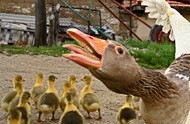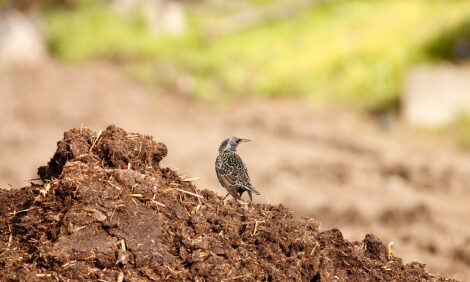



Bird Flu Virus In Europe – A Hidden Danger
EU - H5N1 could become endemic in parts of the region – virus search in domestic ducks and geese crucial 25 October 2007, Rome – The avian influenza virus H5N1 could become entrenched in chickens and domestic ducks and geese in parts of Europe, FAO warned today.The agency stressed that healthy domestic ducks and geese may transmit the virus to chickens and play a more important role in the persistence of the virus in the region than previously thought. H5N1 surveillance in countries with significant domestic duck and geese populations should be urgently increased.
FAO’s warning followed the detection of H5N1 in diseased young domestic ducks by German scientists.
New chapter

“It seems that a new chapter in the evolution of avian influenza may be unfolding silently in the heart of Europe,” said FAO’s Chief Veterinary Officer, Joseph Domenech. “If it turns out to be true that the H5N1 virus can persist in apparently healthy domestic duck and geese populations, then countries need to urgently reinforce their monitoring and surveillance schemes in all regions with significant duck and geese production for the presence of H5N1.” “Europe should prepare for further waves of avian influenza outbreaks, most probably in an east-west direction, if the virus succeeds in persisting throughout the year in domestic waterfowl. This heightens the need for increased surveillance and monitoring of possible virus circulation in domestic ducks and geese,” Domenech said.
Ducks and geese
The link between domestic ducks and geese and chickens is seen by many experts as one of the major underlying factors in outbreaks of HPAI in disease-entrenched countries. “We are particularly concerned about the Black Sea area which has a high concentration of chickens, ducks and geese,” said FAO senior animal health officer Jan Slingenbergh. “In the Ukraine alone, the number of domestic ducks is estimated at around 20 million birds. In Romania, four million domestic ducks and four million domestic geese are found in the Danube delta. These figures compare easily with chicken and waterfowl densities in Asia, where the virus continues to circulate among chickens and has found a niche in countries with tens of millions of domestic ducks and geese,” Slingenbergh said. Importantly, the Black Sea area serves as a main wintering area for migratory birds coming from Siberia and moving also to the Mediterranean and other regions. All countries bordering the Black Sea have experienced outbreaks of avian influenza in the past, favoured by traditional open poultry systems with poor separation between wild and domestic birds.
The German case
The link between the H5N1 virus and domestic ducks and geese has recently been confirmed in Germany.
Scientists of the Friedrich-Loeffler-Institut in Riems have detected the H5N1 virus in diseased young ducks on a farm at the end of August. Further scrutiny at two other farms revealed that, despite the absence of clinical signs and mortality in these ducks, the animals had been in contact with the H5N1 virus, because their immune defense system showed antibodies, developed in response to the virus. Intensified monitoring finally confirmed pockets of H5N1 on one of the farms.
Based on its experience in fighting avian influenza around the world over the past three years, FAO considers that risk assessment, surveillance and virus search strategies should be reviewed, Domenech said.
Countries with significant domestic duck and geese populations in Western and Central Europe as well as the Black Sea region should consider the incidence in Germany as a wake-up call and should not limit the virus search to chickens. Good surveillance is already in place in many European countries and the European Commission has issued in 2007 very comprehensive guidelines.
But there are countries where more monitoring is urgently needed including more focus on ducks and geese which should be considered as particularly risky populations.
“It could well be that there is more virus circulation in Europe than currently assumed,” Slingenbergh said. “We are not saying that the virus is widely spread in European countries, in fact most of the countries are currently virus-free. But undetected localized virus spots in countries with significant waterfowl may pose a continuous risk.”
After Asia and Africa, Europe could become the third continent where the H5N1 could become endemic in some areas, FAO said.








